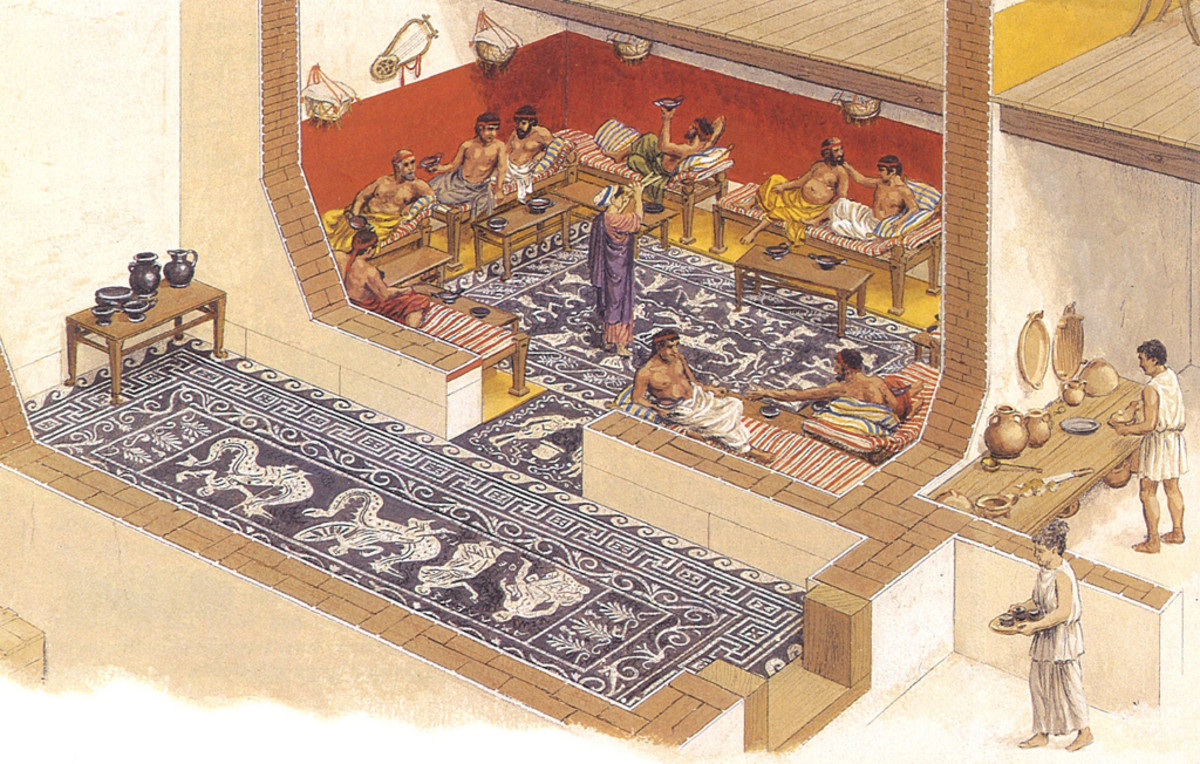From Hyatt to Rubble - Part IV
Ethical Issues (Cont.)
The question that will never be answered is, had Gillum reviewed these details at the time of the atrium’s roof collapse, would he have noticed enough to avert the collapse of the skywalks. Would Gillum have noticed the conflicts on the drawings where the structural plans showed conflicts in the continuous rod and a double rod connection (Administration Hearing, p. 54, #92)? Even now, Gillum still holds that G.C.E. did not handle the Hyatt project inappropriately (National Geographic, time mark 43:53), yet every other venue has determined the opposite. Gillum even authored a book about the Hyatt collapse.
Finally, to look at the actions taken by all those who assisted the victims that fateful summer night; whether before, at, or after the time of the collapse; those ordinary people who acted in heroic ways, regardless of their status as professional or nonprofessional. Many of those acted out of a sense of duty (duty ethics) or a sense of divine command (divine command ethics), those people that placed themselves in danger to help another. Doctor Waeckerle who had to decide who would live or die, “Country Bill” Allman lugging his 95 pound jackhammer, surgically cutting concrete and steel deck to help extricate the injured, Chet Hinkley driving his crane through the glass to lift the skywalk debris to help out rescue workers pull the injured to safety and liquor dealer Frank Hashman there watching a man’s leg being amputated in an attempt to save his life, just to watch him die. What a stark contrast to Gillum’s and Duncan’s response of individual ethical egoism.
Conclusion
Unfortunately, the Architect may not find out that a consultant has failed the project until it is too late. By then, the failure has become apparent, and the aftermath is all that is left to endure for the Architect, client, and public. This can be as simple as correction dollars, or in the case of the Hyatt, years of litigation, resulting in monetary damages to victims and loss of Registration for the perpetrator(s). So now the question becomes, how can an Architect hedge their bets in such a worst case scenario? The simple fact is the Architect does have resources that can be used very effectively in heading off such events. First is the Architect’s personal training. On the design team, the Architect is the one professional that is crossed trained in all other disciplines. The Architectural Registration Exam (ARE) developed by the National Council of Architectural Registration Boards (NCARB) administered by every registration board in every State even carries this cross training, by testing proficiency in structural design, air conditioning (both heating and cooling cycles), electrical design, fire resistive design, acoustical design, and many other areas. These proficiencies are tested so that the Architect can effectively assist every consultant on the design team.
The Architect is the conductor of the symphony of design. A philharmonic would never consider having a conductor without a baton, or with one arm tied behind their back. That would limit the conductor’s ability to lead the orchestra, yet everyday client’s expect the very same from Architects with little resistance provided by the Architect themselves, client’s need to understand the value that the Architect brings to the project, and that expertise is required for project success. For instance, most clients equate the drawings with the Architect’s services, and while those are part of the architectural services, they are not all the architectural services. Standard services that are included as part of the Architect’s services in the AIA (American Institute of Architects) documents include programming, pre-design, preliminary design, construction documents, and construction administration (AIA – B141, §1.3.1.1 & §1.3.3.2) . When the client demands reduced fees, architectural services are sacrificed. In the fast track delivery system that was used on the Hyatt, this reduced fee may have impact the quality of service and ultimately compromised the project and the public’s safety. In the fast track delivery system, having full and complete architectural services are the only way to insure the project’s success.
Some Architects may not be fluent enough in these skills, so it will cost more to bring on specialist with the required skill sets, therefore the Architect needs to educate the client more on the production of these services. Architectural colleges across the Country fit into two specific categories, reflecting the complexity of practice. Those categories would best be described as “design schools” and “technical schools”. Almost a century ago, Architecture was not as complex as it is today. At one exhibit many years ago of Frank Lloyd Wright’s work, I noticed how Wright himself detailed the truss design on his drawings. This included the member sizes, connections, much that is delegated to the Structural Engineer today, done by Architect Wright himself. Working many years ago on a project that was done by a local Phoenix firm, contemporaries of Wright, I witnessed much the same detailing. Today, those details are reserved for the structural drawings exclusively, sealed by the Engineer. The world has changed that it is impossible to find that same system of design delivery from the past great Architects like Wright, and the industry has tiered into the technical and design Architect. Regardless of this change, the Architect still has the responsibility for bringing the art and science of architecture alive, regardless of the technical verses design training. I will not debate if there is a need for separation of registrations at this time either, as the Architect is still the primary design professional for the design team, thus the cross training received by the Architect.
In the first few weeks and months after the skywalks collapse, many things had come to discussion. Harmonic vibration (loading) was one issue looked at that time. An example of that type of loading is the Tacoma Narrow Bridge collapse whose graphic pictures first brought to light this phenomenon. These graphic pictures can be found in many places, but was also included in the National Geographic program about the Hyatt (National Geographic, time mark 27:19). It was a result of the Hyatt that I first became familiar with this type of loading on a structure, to become more clearly understood as I grew professionally.
The information available fails to conclusively prove that the Architect was informed of the, or even a participant of the, decision that changed to the double rod system (Cassias, 2012), yet it impacted a major architectural design theme of the project. Had the Architect been able to spend more time on the review of the shop drawings before forwarding those shop drawings to G.C.E., this event may have been averted, a sacrifice due to the less than full architectural fee. A discussion may have ensued that might have revealed the defective design. The Architect should have been more forceful in demanding the requirements for such a change. Many Architects that I have practiced with hesitate to place stringent demands on consultants to prove the consultant’s reasoning for a design and I have heard it said to me several times that if the Architect exerts too much authority in making these types of decisions, that the Architect would then become liable. The myth with this is that the Architect is the prime contract holder with the client; in any event of liability the Architect is the first person looked at in litigation (Cassias, 2012). The Architect pays the price, without the reward (compensation). Why do Architects settle for this behavior out of clients?
When the shop drawings came in with the change to the double rod configuration, the Architect should have been questioning the Structural Engineer. A critical look, without any calculations, could have shown that the original design would have the rods as the supporting member’s weight and load, where the double rod configuration added the full second floor loading to the fourth floor box beams, yet these beams did not change in size. At this time the Architect should have been questioning the Structural Engineer as to if the original design had the box beams so grossly over designed or if the added load to the box beams over stressed the box beams. This is 20-20 hindsight, but when a design is handed to the Architect during the design development stage of the project, the Architect should be looking with a critical eye what is being done by the consultant. Sometimes the Architect may ask a question that might stir an action that might save the project, making it better and safer for the client and public.
In many instances, the evidence shows clearly that Gillum and Duncan made representations that were not true. It is hard to believe that this never happened before with these engineers. Doctor Phil McGraw has a saying that past actions are the best predictors of future actions. That being said, maybe the Architect should have had more of a raised eyebrow when consultants make any mistakes, especially after the design deficiency that came to light after the atrium’s roof collapsed. If past mistakes are relatively small and the consultants stands up and makes the situation right that will bode well for any future event. However, the more critical concern should be, what does the consultant do to prevent a repeat? If the consultant does not initiate any changes after a major event, the Architect needs to consider having that consultant’s worked reviewed, even if the Architect has to pay for it out of his own pocket. That act might have saved PBNDML a lot of costs in litigation that dwarfed the loss of those costs of additional review. It seems to me that a constant repeat of small problems would show an inability to learn from the past, and that is a firm leadership problem. It is that leadership inability to correct past behaviors that leads to larger problem as that fateful night in Kansas City. There is no way to overemphasis to Architects the need for selecting the best consultants and insuring enough fees for firm profitability simultaneously. This might start to build a case for the rebuilding of the full and complete Architectural / Engineering firm (A/E) where the consultants reside in the same office and under the same ownership as the Architect.
The most disturbing determination to be made in this case is the fact that neither Gillum, nor anyone under Gillum’s direct supervision ever provided a thorough and complete review of the structural drawings. In my career, this is not an uncommon occurrence, especially in a larger firm, both architectural and engineering. When a Registrant places that much trust in their staff that particular Registrant had better be personally aware of each and every person, their character, their ethical practices, and their abilities. The Registrant must remember that the actions of those on staff will have a direct repercussion on the registrant’s professional standing. It must be noted that once Missouri revoked the Registrations of Gillum and Duncan, all other States that these two Engineers were Registered in, ended up following suit. Most all States will revoke a Registrant’s registration if another State revokes its registration of a person. That is an awful lot of trust for one to place in staff blindly. Most importantly, the public pays the price when failure occurs, in this case 114 precious lives.
The Architect can influence a project’s safety and outcome by taking small steps. G.C.E. should have been questioned by the Architect when the structural drawings were being coordinated. After the atrium’s roof collapsed, and finding out that Gillum had admitted that there was no expansion capabilities, the Architect should have been demanding a sit down meeting to thoroughly review all the details with Gillum and Duncan one by one. When a major system design is overlooked, the Architect should just never accept the consultant’s word. “Trust by verify” must the modus operandi (mode of operation) for the Architect from that point forward for the project’s safety and success. The failure to provide the required expansion capabilities at the atrium’s roof was fairly obvious, and might have lead to a long term failure potential in any case, even if the roof had not collapsed during construction. This is still apparently happening three decades after the skywalks collapse on projects. Have we really learned from this incident? Let this be a call to all design professional, but especially the Architects.
Furthermore, Gillum and Duncan failed to reflect the Architectural drawings accurately by not clearly delineating the single rod design. The administrative ruling stated that there were conflicts that could have lead the fabricator to believe that it was intended to have a double rod design all along. This led to the critical double loading of the fourth floor box beams. The Engineers should have never made this change without explicit directions by the Architect. The Architect should have been more demanding in the reasons behind the change if the single rod design was so important to the architecture (Cassias, 2012). Without a real compelling reason, other than cost, the Architect should have not caved in on that changed.
© 2012 Dan Demland








